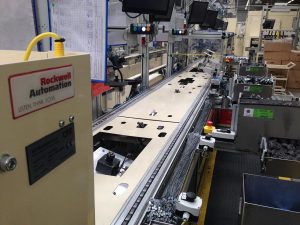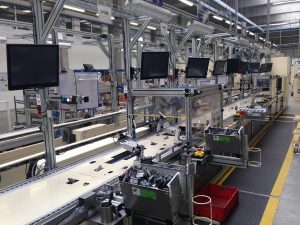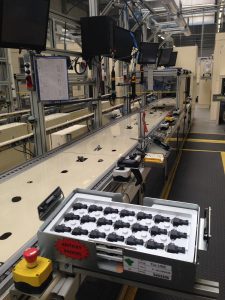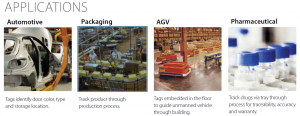Leading automotive tier one leverages project management, technical capabilities and class-leading Integrated Architecture products from Rockwell Automation
 Background: Pyeong Hwa Automotive (PHA) is a world leader in the automotive subassembly business. Headquartered in Korea, the company operates seven plants in Korea, seven plants in the Czech Republic, Slovakia, China, India and the USA and three worldwide sales branches.
Background: Pyeong Hwa Automotive (PHA) is a world leader in the automotive subassembly business. Headquartered in Korea, the company operates seven plants in Korea, seven plants in the Czech Republic, Slovakia, China, India and the USA and three worldwide sales branches.
The company’s Czech Republic plant, PHA Czech s.r.o., in Český Těšín, 300 km east north of Prague, started production in 2008 and employs 300 people. Its primary focus is to produce door modules for a leading Korean automotive original equipment manufacturer (OEM). However, it also produces non-module door hinges, bonnet/hood hinges, tailgate hinges and tailgate latches for a number of other leading automotive OEMs.
In a recent development programme, the Rockwell Automation® Global Solutions team in the Czech Republic was tasked by PHA Czech s.r.o. to develop a complete control solution for a front/rear, left/right turnkey door module assembly line and end-of-line (EOL) test stations. The project scope for the team, which has been working with PHA since 2006, involved project management, administration, hardware and software design, cabinet manufacture, site installation, commissioning and production start-up.
Challenge: The assembly line – the fifth to be developed by Rockwell Automation for PHA – had to be designed to meet demanding production capacities and targets; capable of building 850 car sets per day, yet flexible enough to support building up to 1,000 car sets per day. It also would be the first door module line built on a conveyor concept, where the panels move on pallets and the operators stay in one place.
In addition, PHA wanted enhanced quality levels and various process optimisation steps based on both knowledge from previous installs and newer standards and targets defined by more recent end-user customer requirements. A comprehensive machine and personnel safety solution was also part of the brief.
 Solution: For the complete door module car set assembly, there are two lines (front and rear) with conveyors carrying the front door module down one side and the rear down the other. These modules are then assembled in parallel using an identical sequence. Assembly operations include: pulley pre-assembly and riveting; drum winding; window regulator assembly; motor and speaker assembly; latch placement and the incorporation of a side-impact sensor and wire harness. The end-of-line (EOL) inspection stations then undertake full door module functionality tests and motor noise sound inspection (in a sound room), deploying a Poka Yoke quality system.
Solution: For the complete door module car set assembly, there are two lines (front and rear) with conveyors carrying the front door module down one side and the rear down the other. These modules are then assembled in parallel using an identical sequence. Assembly operations include: pulley pre-assembly and riveting; drum winding; window regulator assembly; motor and speaker assembly; latch placement and the incorporation of a side-impact sensor and wire harness. The end-of-line (EOL) inspection stations then undertake full door module functionality tests and motor noise sound inspection (in a sound room), deploying a Poka Yoke quality system.
According to Rockwell Automation Account Manager Miroslav Novotny: “This was a complex project, which was made easier thanks to our Integrated Architecture® portfolio. The main line controllers on the front and rear lines are Allen-Bradley ControlLogix® 1756 L73 programmable automation controllers (PACs). The chain conveyors and motors, which handle all aspects of pallet movement are controlled using Allen-Bradley PowerFlex® 525 variable-speed AC drives. This comprises lateral and up and down movement of the pallets between workstations, and control of the recirculating conveyor, which takes empty pallets back to the beginning of the production line.”
The ControlLogix PAC collects, collates and controls all the signals from the various assembly stations using Allen-Bradley Stratix™ managed switches and Allen-Bradley POINT I/O™ modules on an EtherNet/IP™ network. This is to accommodate the long distances involved, including the primary conveyor which is 15 m long. At the end of the line, in the testing stations, four Allen-Bradley CompactLogix™ PACs are used, two in the sound rooms and two in final inspection. The ControlLogix PAC also oversees a robot used on part of the line.
The automation solution is completed by a wide variety of Allen-Bradley low-voltage products, including buttons, sensors and other accessories, inside the cabinets deployed at each station. Finally, the line’s safety infrastructure, which complies with all local safety legislation, comprises a number of Allen-Bradley safety gates, linked together with emergency stops at each station, all connected in series to safety relays within the main control cabinet.
Rockwell Automation Global Solutions Team Leader in The Czech Republic, Petr Veselý, explains: “I have worked with PHA for 10 years now. For this project we met with their engineers, who gave us a very detailed specification, including 3D models of the final product. They also gave us their expectations regarding timings and volume targets. We delivered a complete solution – from the control architecture and software to supervision of the whole line, including all mechanical and electrical elements. We also dealt with three local mechanical assembly suppliers and once the concept had been created, we then handled all of the approvals within PHA.
“Once the mechanical design had been approved,” Veselý continues, “the manufacturing go-ahead was given and the electrical concept was developed. Upon approval, we employed four programmers from the Rockwell Automation office in Prague to create the software application. Two programmers worked on the main line and two on the inspection stations. Studio 5000® was used for visualisation and, in answer to one of PHA’s primary demands for flexibility, we applied customised application windows. Each station uses a separate all-in-one PC touch panel (18 on the main line and 11 in the standalone and test stations) running C++ applications. Further visualisation and control of the main conveyor is supplied by two Allen-Bradley PanelView Plus™ HMIs.
Results:
 According to Novotny: “This successful project delivery demonstrates the professionalism and capabilities of our Global Solutions team, not only in the provision of technical solutions but also in the delivery of complete project management. The experience and skills obtained in this instance will be adopted as a basis for further similar opportunities in the automotive market, including future projects with PHA. Indeed, we are already in discussions with PHA for the provision of another door assembly for a different car model.”
According to Novotny: “This successful project delivery demonstrates the professionalism and capabilities of our Global Solutions team, not only in the provision of technical solutions but also in the delivery of complete project management. The experience and skills obtained in this instance will be adopted as a basis for further similar opportunities in the automotive market, including future projects with PHA. Indeed, we are already in discussions with PHA for the provision of another door assembly for a different car model.”
Przemysław Sakowicz, Manufacturing Engineer at PHA Czech s.r.o. cites fast support, good relations and previous good experiences of working with Rockwell Automation as the primary reasons for using the leading automation provider again: “I know exactly what quality I can expect from Rockwell Automation, it has a very good team of programmers that reacts quickly to any issues or challenges we face. We had multiple customer audits before and during project start up and the auditors were very satisfied with what we have developed with Rockwell Automation, which is very important for us. I would particularly like to thank Petr Veselý and his team for the project fulfilment and management; they met all the requirements from my side.
“With regards to specific benefits of the Rockwell Automation solution,” Sakowicz concludes, “as well as hitting the production targets, we expect to see significantly reduced programming for the new line we are developing as well as the easy tuning and manipulation of the software we have seen in this solution. The Rockwell Automation Integrated Architecture has also delivered a more flexible and open platform for both remote troubleshooting and local maintenance.”
Written by Technical Lucidity on behalf of Rockwell Automation
Link to PDF (also created by Technical Lucidity Ltd.) EMEA2003 PHA Automotive (Lo)

